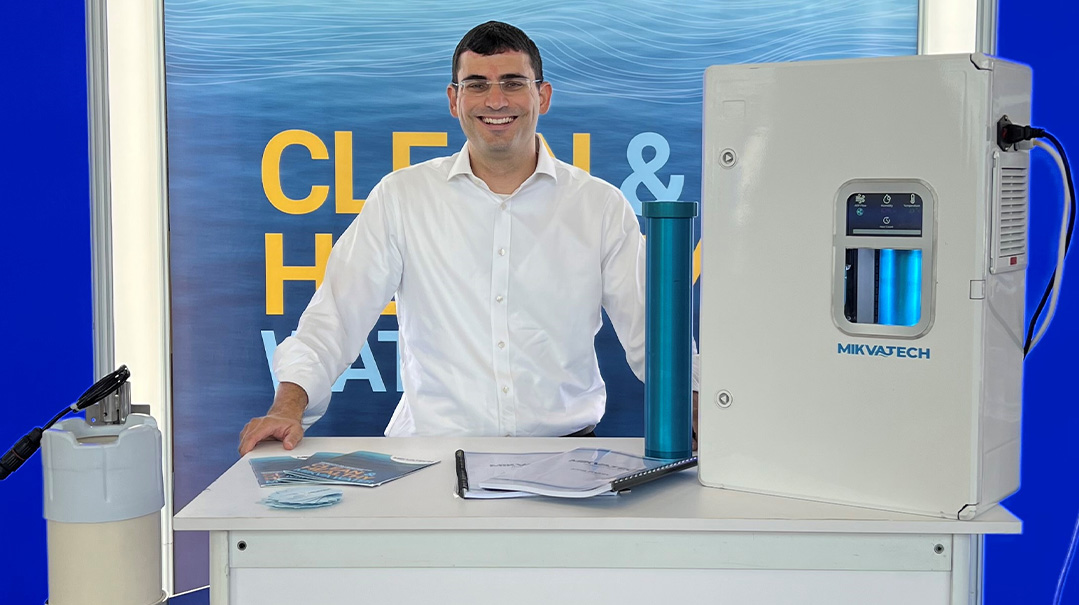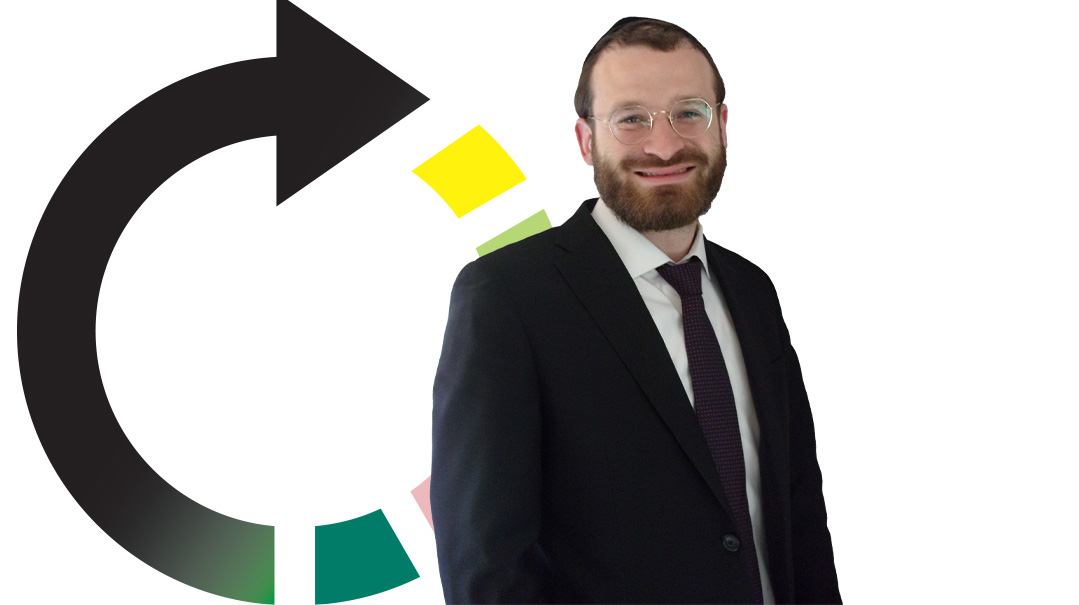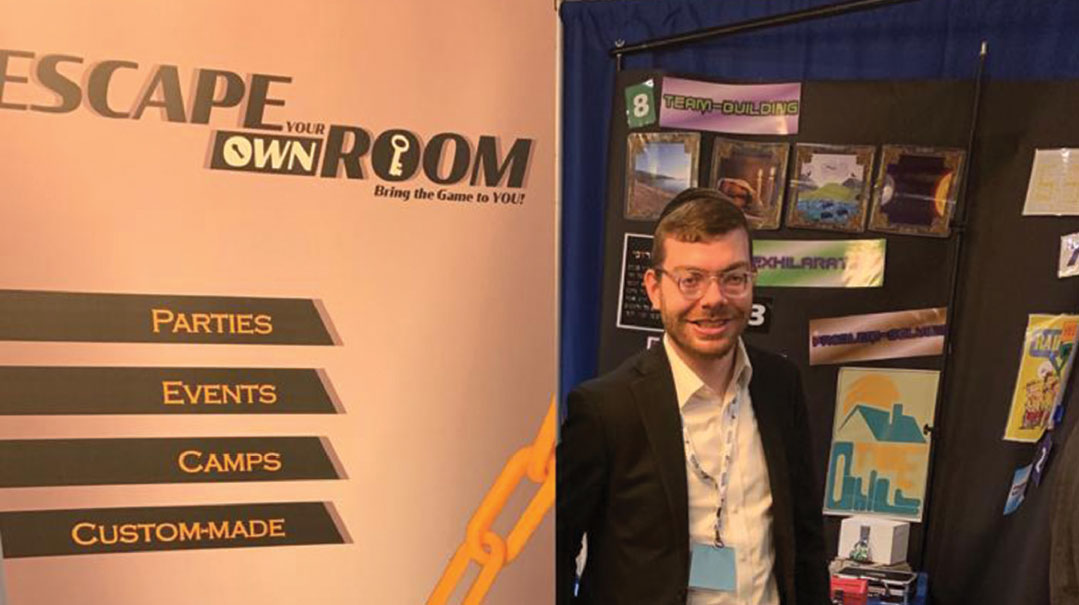Day in the Life of Joseph (Yoseph) Green

Joseph (Yoseph) Green is the CEO and president of Rank Friendly, which helps clients with search engine optimization.
He lives in Israel and runs his business out of its office in Spring Valley, New York
What I do
I grow companies by bringing them a high volume of traffic that converts really well to sales. We take businesses from ground zero to millions of dollars in sales annually.
What that means
We use tried and proven SEO — that’s search engine optimization — methods to bring your website to top spots in search engines. This means when prospective clients search for your product or service, they’ll find a link to your site way up high in the search engine, and likely click on it. I call myself the “Senior Searchineer at our office, and my team and I love SEO and all things digital marketing. SEO is about giving web users the best possible experience on your web page. A website that does this will rank well on search engine pages, because search engines want to give users a relevant, quality experience, and if your website is the one that can do that, your website is the one the search engine will share with users. Aside from SEO, we also provide relevant services like website design and development, PPC or pay per click, social media management, and other digital marketing methods.
The process
We’ve found that there are four milestones companies must go through to be successful on the web. First, you need to build the right online presence — a website that’s optimized for both SEO and for your audience. Next, you need to attract traffic to your properties from different channels like pay per click; organic traffic from Google, Yahoo, Bing, and new smaller search engines; social media; guest blogging; and local platforms like Yelp. Then you want to turn this traffic into leads and customers for your business. Last, you want to turn your customers into fans and promoters for your brand, so they’re bringing you more customers. We can take care of these four elements for you.
How I got started
I was enrolled in an online college with the dream of earning my PhD in psychology. I did a ton of research online for it, and what really amazed me was that anyone and everyone has a say on the web, no credentials needed. I got to thinking, what was I an expert in? Being an Orthodox Jew. I wanted to contribute to the web in that way, and I bought a now-outdated domain, orthodox-jews.com. But I didn’t just want to write, of course, I wanted to get people to read what I was writing, so I googled “how to come up high on Google,” and I found that the industry was all about outsmarting and spamming Google as if Google was the enemy. Even well-known names in the industry advocated this! I didn’t believe in this approach, because I’m not smarter than Google. I hated the thought of tricking the system to get ahead.
My first foray
I liked what I heard from an influencer in the SEO industry — he actually believed in a credible approach of building value on your site. I worked on applying true value to orthodox-jews.com by adding information people searched for — Jewish customs, lifecycle events, modesty — and over time, people began asking questions, so I created a blog to answer them. I got questions from someone having an interview with an Orthodox Jew who wanted to know how to behave, from a Jew at the other end of the world looking for kosher food, from a business owner asking why his employee defies their head-covering rules by wearing a kippah, from a jail administrator about how he can better accommodate Orthodox Jews, from writers and researchers, from people looking to convert, even from people who visited the Kotel and wanted to understand what’s the flashlight Jews have on their heads? Answer: tefillin. Once I saw I had visitors, and my site’s ranking shot up, I monetized the site with Google Adsense, where Google placed ads related to my content around the site.
What happened next
Word got out and a friend in the insurance industry approached me with a proposal: he wanted to move into structure settlement, a highly competitive industry where each click on an ad costs around $400, and he wanted me to partner with him and build this financial site. I built it from scratch — coding, design, development, SEO strategy, link building, and everything else a site needs to rank well. After a year, the site actually got noticed by JG Wentworth, a publicly traded company that does billions of dollars in transactions annually, and they bought it from us. From there, other big players in the industry took note and things took off, baruch Hashem.
Most memorable client
When the CEO of a financial firm that does billions of dollars in transactions inquired about our services, I explained my SEO approach to him: We can’t outsmart Google, we have to work with them in a way that actually proves that we’re the best in the industry. This conversation took place at a time when the SEO industry was considered a “spammy” business, and people were using black hat tactics, which are unethical ways to build a site’s rankings. He told me he had 40 years of business under his belt, and he knew business is about exchanging value, not tricking someone; he didn’t understand why he’d need to trick Google to get users. He said I was the first SEO guy who talked about the great value SEO can provide the user. I got the contract, and five years later we’re still serving them — and he ranks top in his highly competitive industry.
If I could tell my clients one thing, it would be
When you’re involved in your project and respond quickly, we can over-deliver. My team is ready to go — we’re excited to move and to get you places. But if we’re busy chasing you, it looks like you’re not interested. Even worse, when we spend time waiting for you to make decisions, things stall. We simply can’t move on your project.
Best advice I’ve ever received
One of our longtime clients wanted to increase his level of content marketing. We almost doubled the number of deliverables per month without adding staff or increasing anyone’s hours; we simply made better use of our time. This client told me that as a business owner, he saw his staff sometimes accomplished way more during busy seasons than quieter seasons — without increasing work hours. This pushed him to figure out how to maximize output during quieter seasons as well. “If you push yourself, you can produce a lot more during ‘quiet months’ too,” he said — and he’s right!
Busiest time of year
Because we’re a B2B business, and businesses can always benefit from our services, we don’t have a particularly busy season. That said, we do see an uptick in January when businesses put their New Year’s resolutions about upping their digital presence into action. In the frum world, after Succos and Pesach, at the start of the new zeman, is when many yungeleit jump into new businesses, and we see an uptick then. Generally, though, we do the onboarding process during our clients’ quiet season so we can be efficient about the workflow when setting them up. Unless someone gets knocked off Google’s grid — then it doesn’t matter what time of year it is, they need us ASAP.
In Brief:
My staff I have nine people on payroll: a UX designer, web developers, live chat specialists, a PPC specialist, and an SEO expert. I also hire experienced writers from time to time, including one who wrote for Fox Business News.
Buzzwords
We talk a lot about mobile optimization, speed, link building, quality blogs, great user experience, live chats, because these are best SEO practices that enhance your ranking and enable customer conversion.
Most common question “How long will it take me to get to Google’s first page?”
The best feedback I’ve ever gotten I once did a complex financial site within an extremely tight timeframe so the clients could achieve credibility and affiliations with banks they’d been trying to partner with. They sent me a thank you email with a voucher for two round-trip tickets to Israel attached!
(Originally featured in Mishpacha, Issue 802)
Oops! We could not locate your form.














